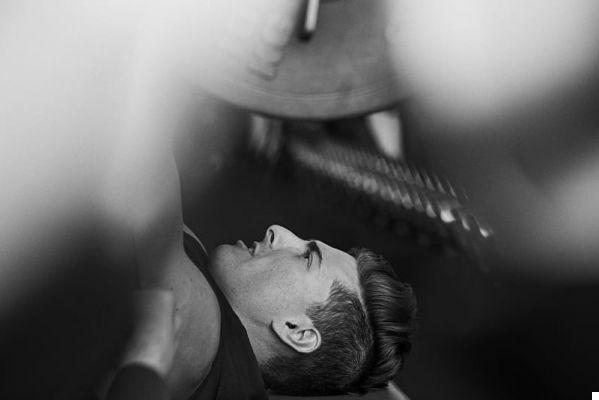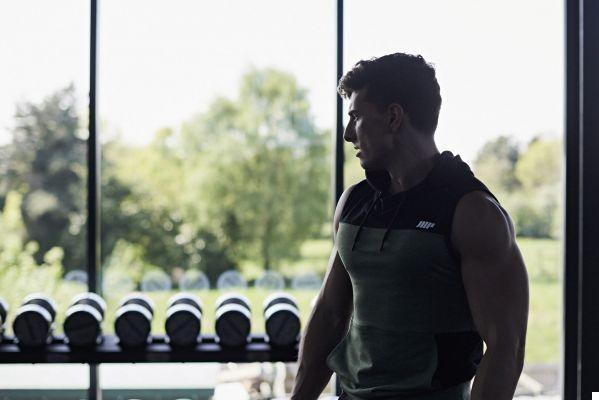“Toe taps” means an exercise for the abdominal muscles and the psoas. There are numerous variations of this exercise, some similar to bent knee scissoring while others are more like a progression of this exercise.
In this last case the movement is more similar to a double crunch where the legs remain almost perpendicular to the ground while bringing the hands to touch the feet. The toe taps described are intended to refer to this variant.

execution
The execution is as follows:
- The starting position is supine (back to the ground).
- Perform a reverse crunch keeping the knees extended or almost fully extended. The legs must remain slightly inclined downwards, not completely perpendicular to the ground, in order to maintain constant tension on the abdominals. During the entire exercise, it is necessary to keep the abdominal transversus contracted or try to always pull in the belly.
- From this position, lift your shoulders off the ground by bringing one hand towards one foot until it touches it. It is possible to bring the right hand to the left foot in order to further involve the oblique muscles of the abdomen. It is also possible to bring both hands towards the feet by crossing them in order to increase the abdominal compression necessary to touch the feet with the hands. a good idea would be to do a cross repetition for each side and then a repetition with both hands crossed. In any case, when lifting the shoulders it is necessary to exhale deeply.
- Hold the position for a second or two and return with your shoulders to the ground. The return phase (eccentric contraction) must be controlled.
- Repeat for the number of repetitions desired.
Muscles involved
The muscles protagonists of the movement are certainly the abdominals. The rectus abdominis must work in isometry to keep the legs raised (therefore the pelvis raised during the reverse crunch) and from this position it must actively contract to lift the shoulders off the ground to bring the hand towards the feet.
The crossed hand-foot version allows you to work even more on the obliques. The hip flexors (ileus, psoas, and rectus femoris) contribute to movement.
In this exercise the abdomen works in maximum compression so, if you breathe correctly (as described), the abdominal transversus does an important job.
Common mistakes
A common mistake is the not combining breathing with movement correctly.
When lifting the shoulders from the ground to bring the hand towards the foot it is important to exhale (push the air out) deeply.
This allows you to better contract the abdominals and especially the transversus abdominis and also does not hinder movement.
In fact, if you hold your breath, the abdomen remains "swollen" and hinders the abdominal compression necessary to flex the abdomen.
Sometimes we tend to lose the retro-version of the pelvis by extending the lumbar area. To prevent this from occurring, it is helpful to focus on keeping the pelvis raised and the lumbar spine close to the ground.
Another common mistake is to give oneself momentum.
To bring the hand towards the foot you have to contract the abdominals and not give the momentum with the back or swinging with the legs.
The toe taps described are not an easy exercise, especially if you are not used to working in maximum abdominal compression.
It is important to work step by step: always lift your shoulders off the ground but only go up to your knees with your hands.
The important thing is not to be able to touch the foot with the hand but rather to test the abdominals in order to provide the body with the stimulus necessary to induce an adaptation.
As always aim for quality over quantity (especially when training muscles such as abdominals)
A final mistake is not to make the exercise difficult in relation to one's abilities.
This error can be considered the opposite of the previous one. If you can easily perform several repetitions in the same-hand-same-foot variant it is useful to switch to the opposite hand-foot-variant.
The first time you will be able to perform only a few repetitions with this difficulty but it is enough to simply regress to the easier variant by simply changing the position of the hand.

Transfer with other exercises
The described toe taps are a very useful exercise to increase the compression of the abdomen. It is therefore a useful exercise to be included in the accessory training of calisthenics skills such as the V-sit or as the press to handstand.



























